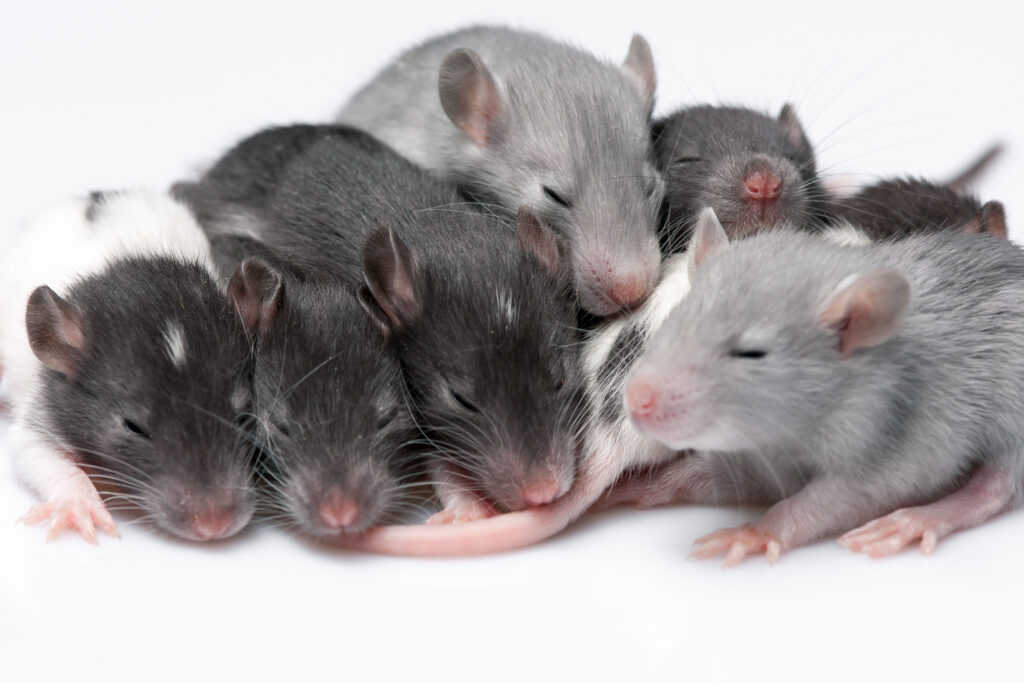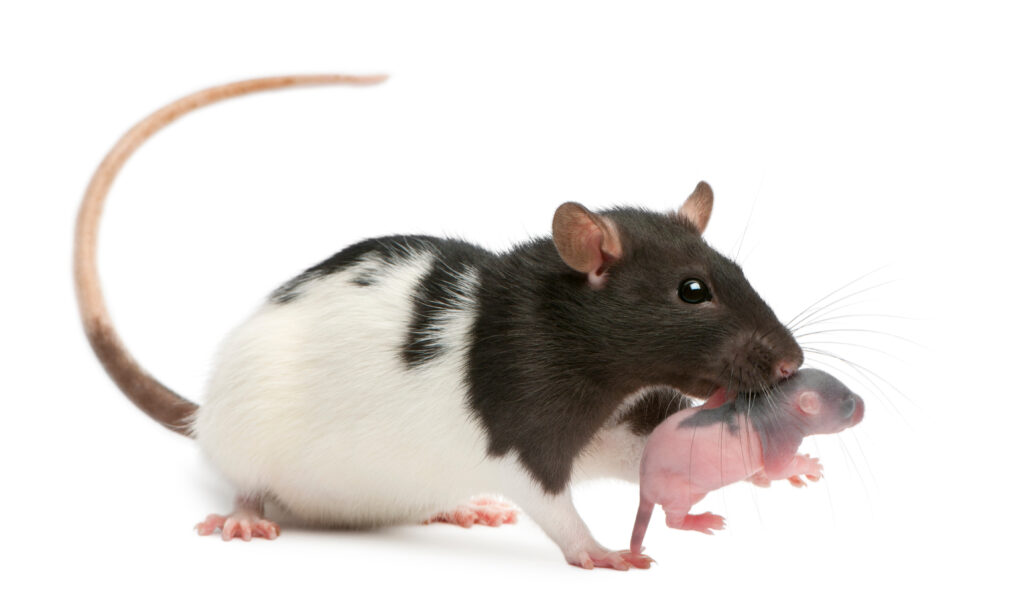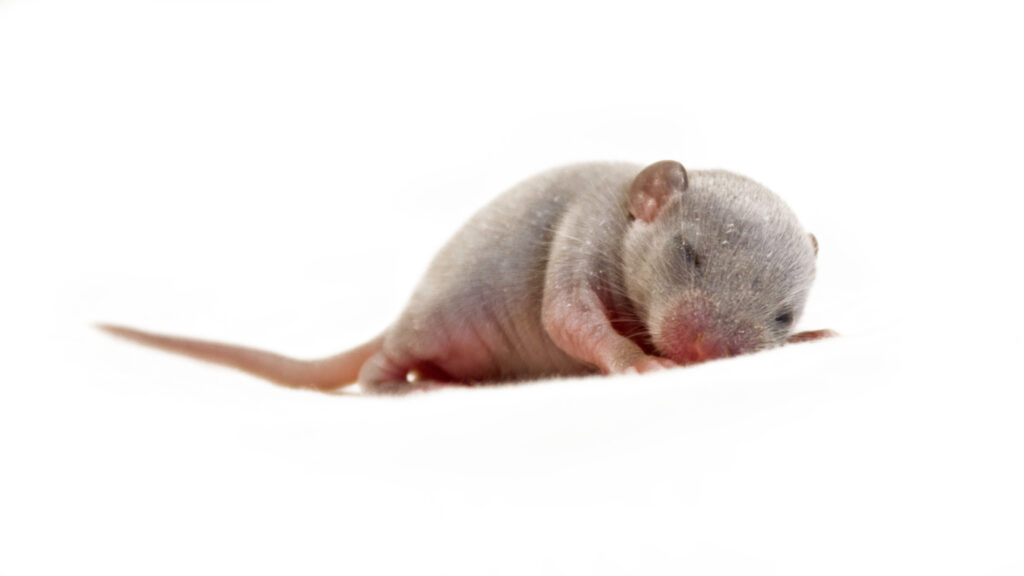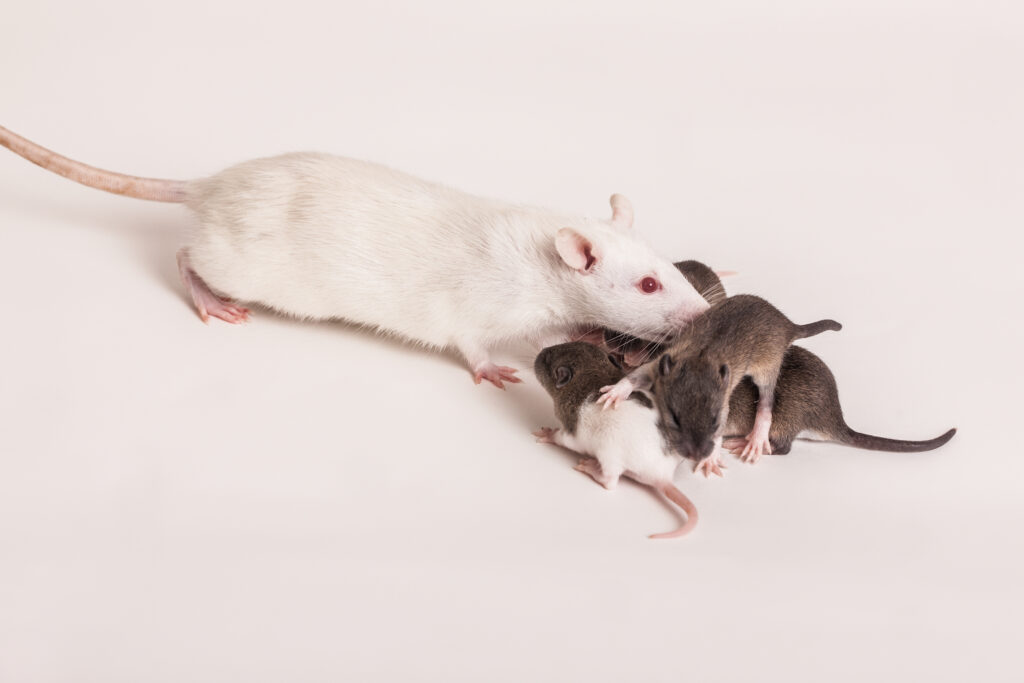
Updated April 15, 2025
If you’re dealing with a rodent problem, it’s important to know what you’re up against. Whether you’ve spotted a baby rat or a baby mouse, identifying the difference is crucial for effective pest control.
Thankfully, there are some key differences between baby mice and rats that you can use to easily identify them. In this blog, we’ll show you how to quickly and accurately identify a baby mouse vs baby rat.
Introduction to Baby Mice and Rats
The easiest way to identify a baby mouse vs. a baby rat is by looking at their physical appearance. Here are some clear distinctions:
Baby mice and baby rats are both small, young rodents that are often mistaken for one another. Baby mice and rats are born blind and hairless, and their fur doesn’t fully develop until they reach around three weeks of age.
Baby mice and baby rats are both born with a lot of energy and curiosity. They love to explore and can easily find their way through small spaces. This makes them hard to contain and can be a challenge to control if they get into your home or property.
The main difference between baby mice and baby rats is their size. Baby mice are generally smaller than baby rats, and their ears and tails are also shorter. While baby mice and baby rats may look similar, there are some key differences that you can use to tell them apart.
Physical Appearance of Baby Mice vs Baby Rats

Whether you’re dealing with newborn mice, a baby rat, or an entire infestation, knowing how to spot the differences can save you time, money, and frustration. Let’s break down the distinct characteristics that can help you identify a baby mouse from a baby rat.
Identifying a Baby Mouse vs Baby Rat by Size

One of the most reliable ways to distinguish a baby mouse vs. a baby rat is by their size. As mentioned, baby mice are usually around 1 to 2 inches in length, while baby rats are usually around 2 to 4 inches in length.
It’s important to note, however, that size can vary depending on the age of the baby mouse or rat. This size difference becomes even more noticeable as they grow, and both can reach their full size at around six weeks of age.
Identifying a Baby Mouse vs Baby Rat by Fur Color

The fur color of baby mice and baby rats can also be used to identify them. Baby mice typically have gray or brown fur, while baby rats are usually brown or black. Baby mice also tend to have white bellies, while baby rats usually have white feet.
When comparing a baby mouse vs. a baby rat side by side, these differences become more apparent. Baby mice and baby rats also have different fur textures, which can help you identify them. Baby mice usually have softer fur, while baby rats tend to have rougher fur.
Identifying a Baby Mouse vs Baby Rat by Ears and Tail Length

Another key difference between baby mice and baby rats is their ear and tail length. Baby mice have noticeably smaller ears and shorter tails compared to their rat counterparts. Their ears are usually no longer than ¼ inch, while baby rats can have ears that stretch up to ½ inch.
Tail length is another reliable clue. Baby mice have short, thin tails that typically measure 2 inches or less. Baby rats, however, sport much longer tails that can grow up to 4 inches.
Identifying a Baby Mouse vs Baby Rat by Behavior

Behavior can be a helpful clue when telling apart baby mice and baby rats. Baby mice are typically more active and curious, constantly exploring their surroundings and seeking out new environments. They tend to be more vocal, often emitting high-pitched chirping sounds when they’re excited or frightened. This playful, adventurous nature makes them easier to spot.
Baby rats, on the other hand, are usually timid and cautious. They prefer to stay close to their nest and avoid unfamiliar areas. Unlike baby mice, they are much quieter and less likely to make noise. Their more reserved behavior can make them harder to detect.
Rodent Control in the Bay Area

Telling the difference between a baby mouse and a baby rat can be tricky, but it’s essential for effectively handling infestations. Fortunately, there are clear distinctions you can look for, including size, fur color, ear and tail length, and behavior. Paying attention to these details can make identification much more manageable.
When it comes to effective rodent control, proper identification of the species is crucial. Mice and rats require different approaches for effective removal and prevention. A cookie-cutter approach just won’t cut it.
At Banner Pest Services, we have the skills and tools to safely eliminate pests from your home or property. Reach out to us today to learn more about our expert pest control solutions and how we can help you reclaim your space.



